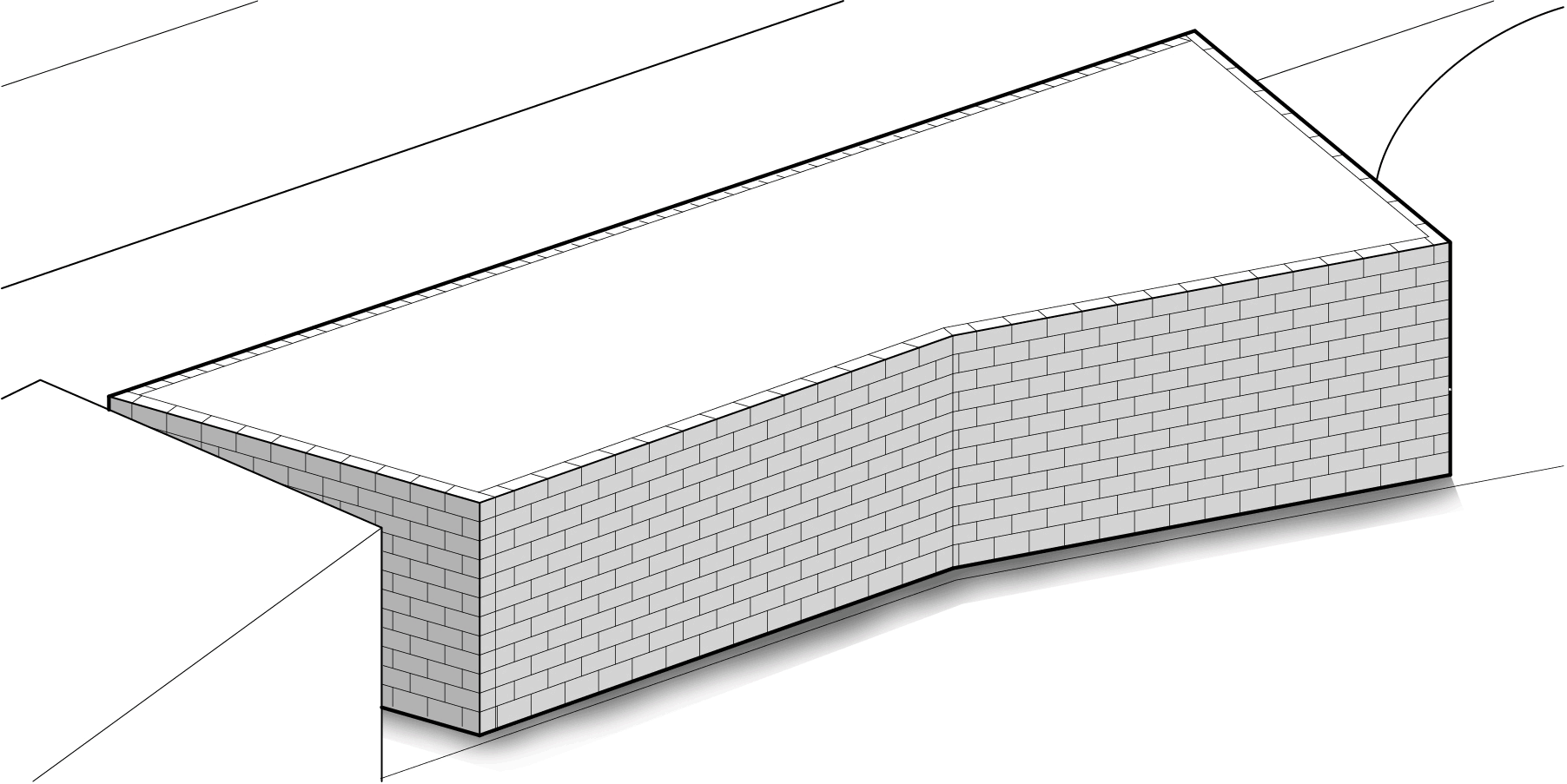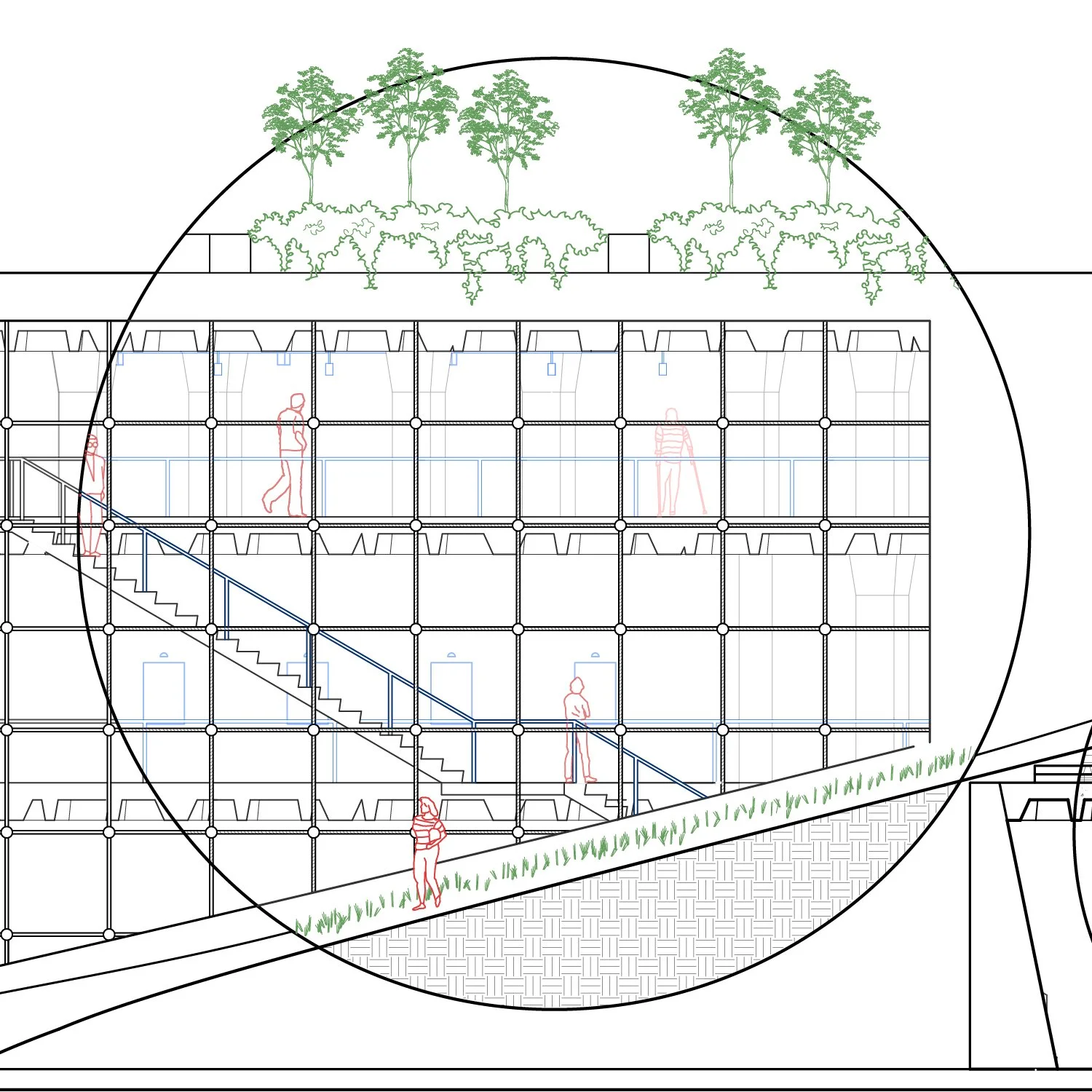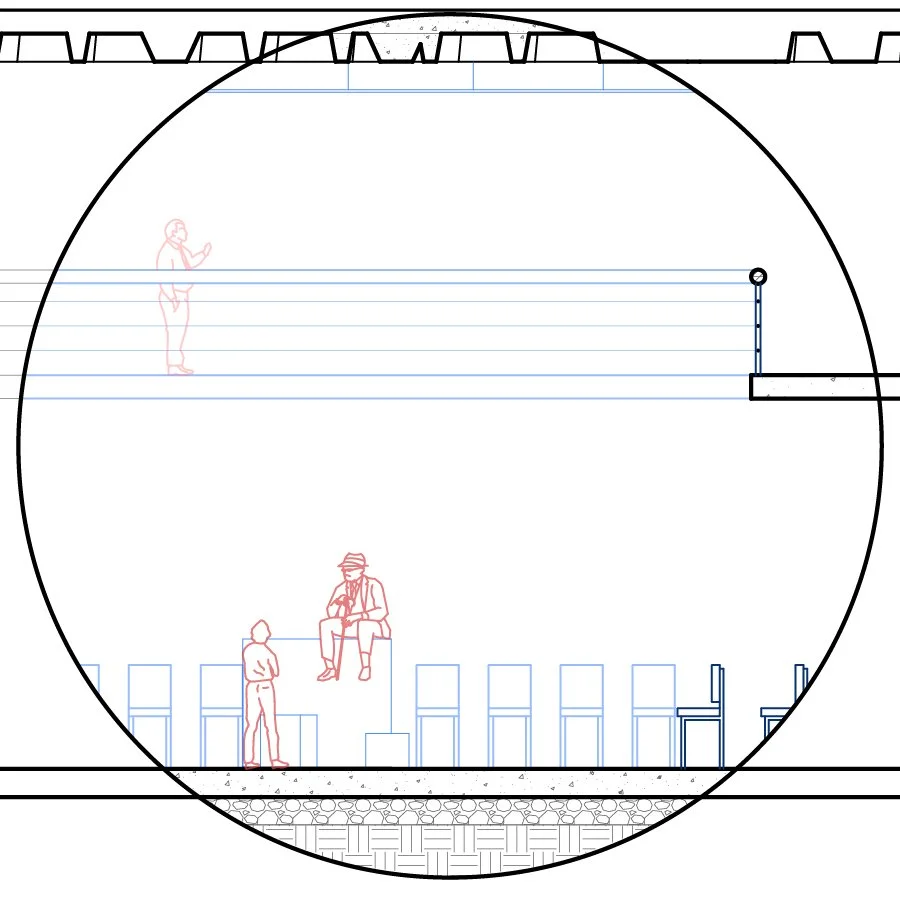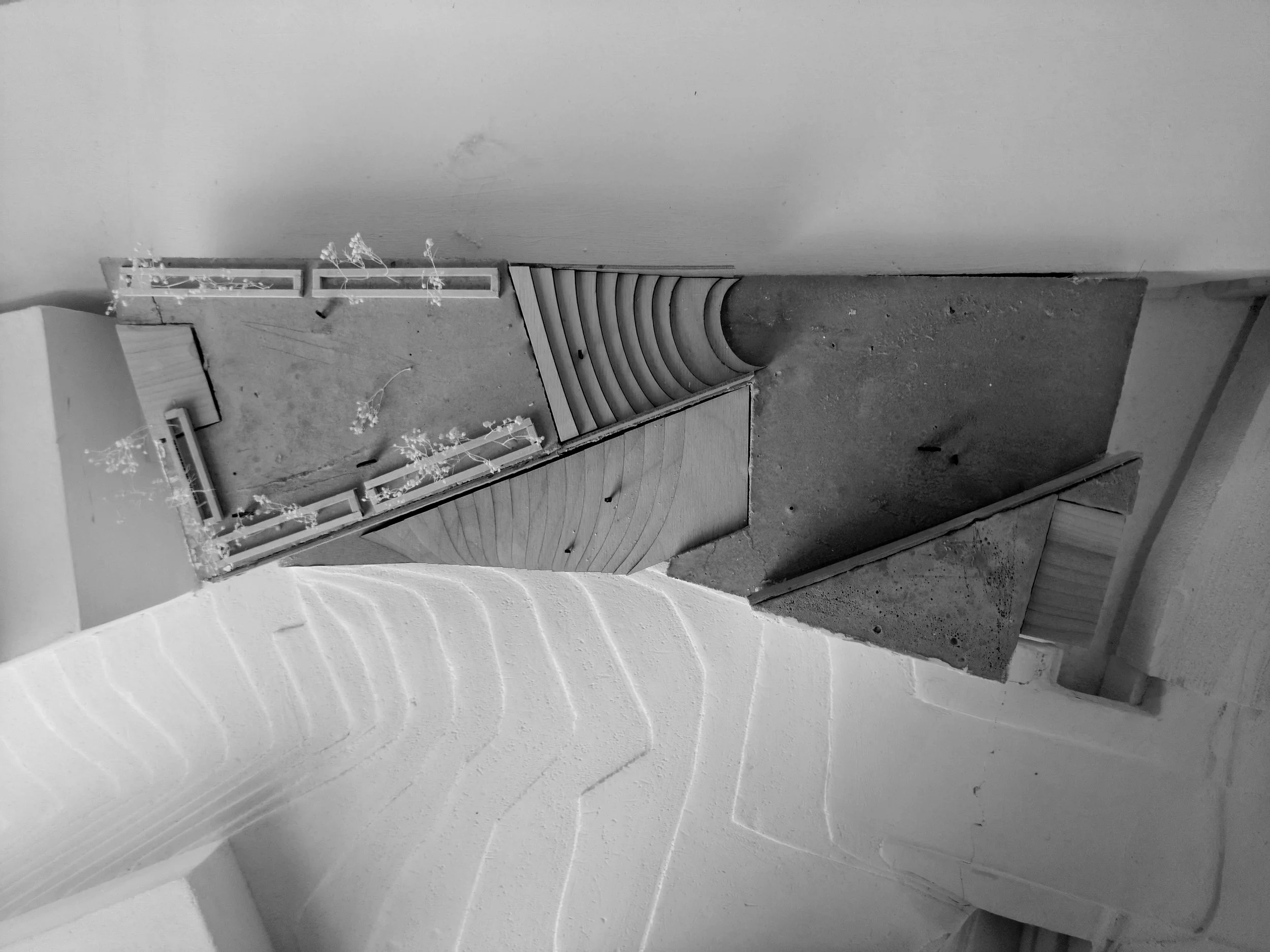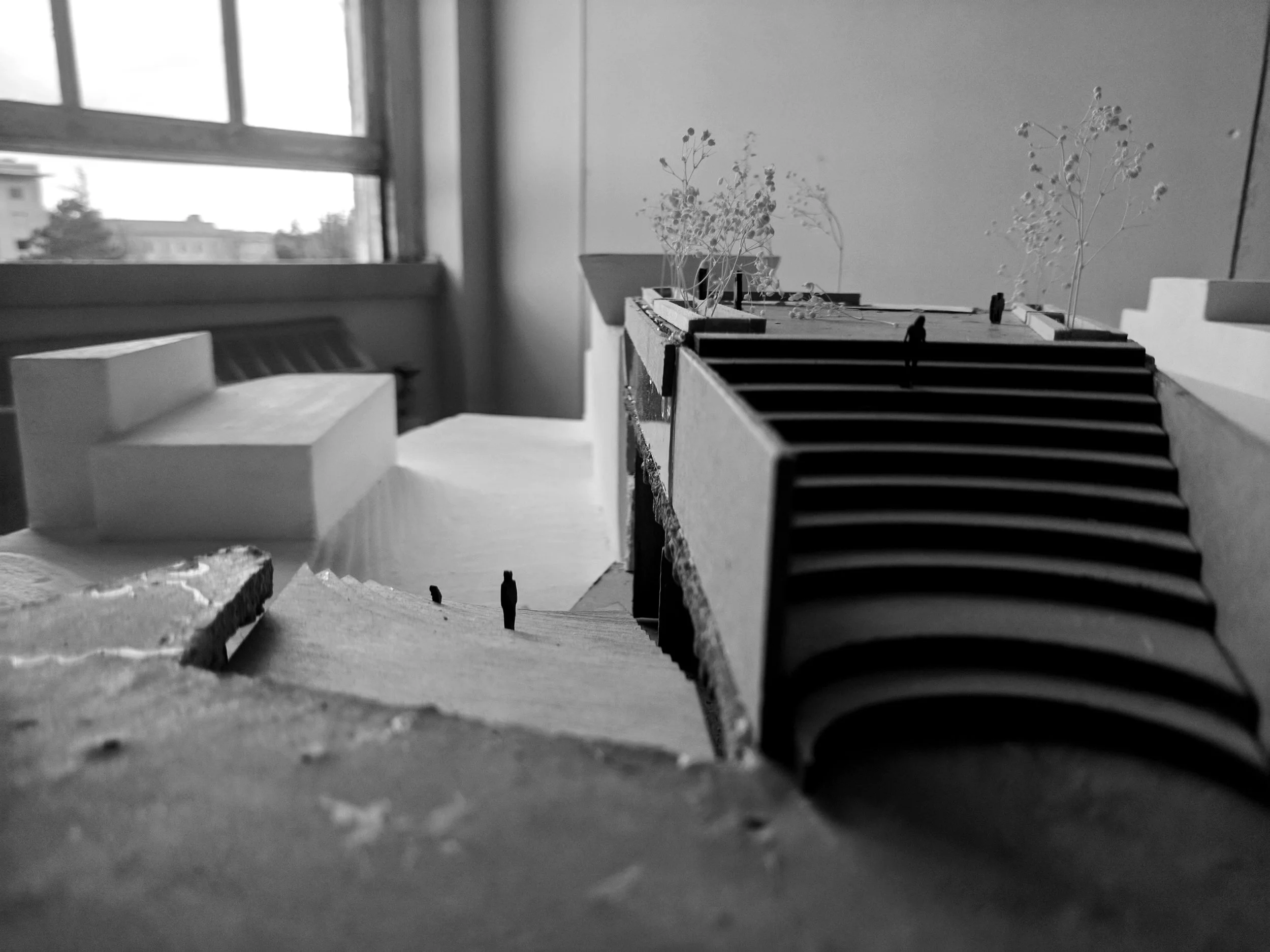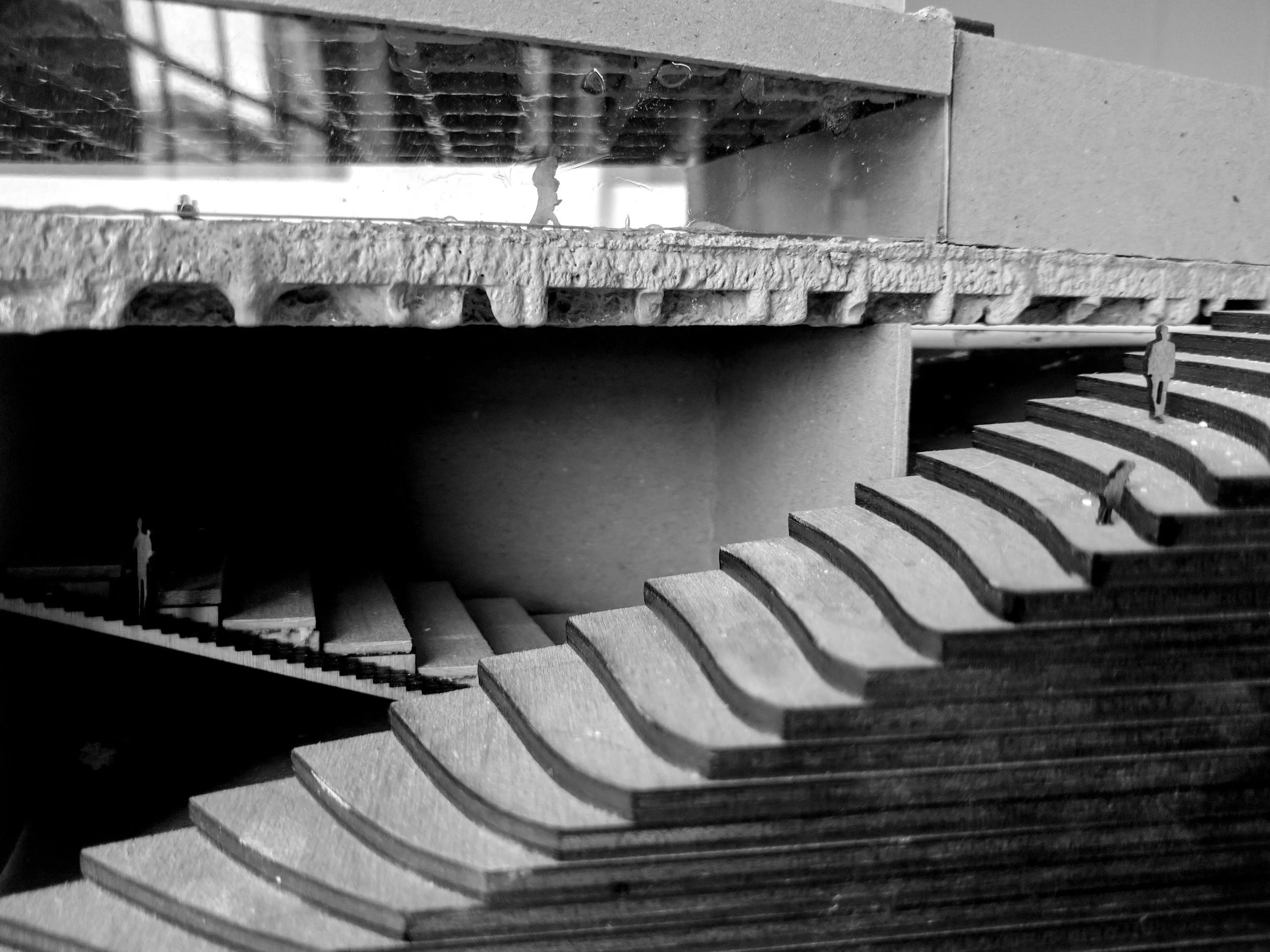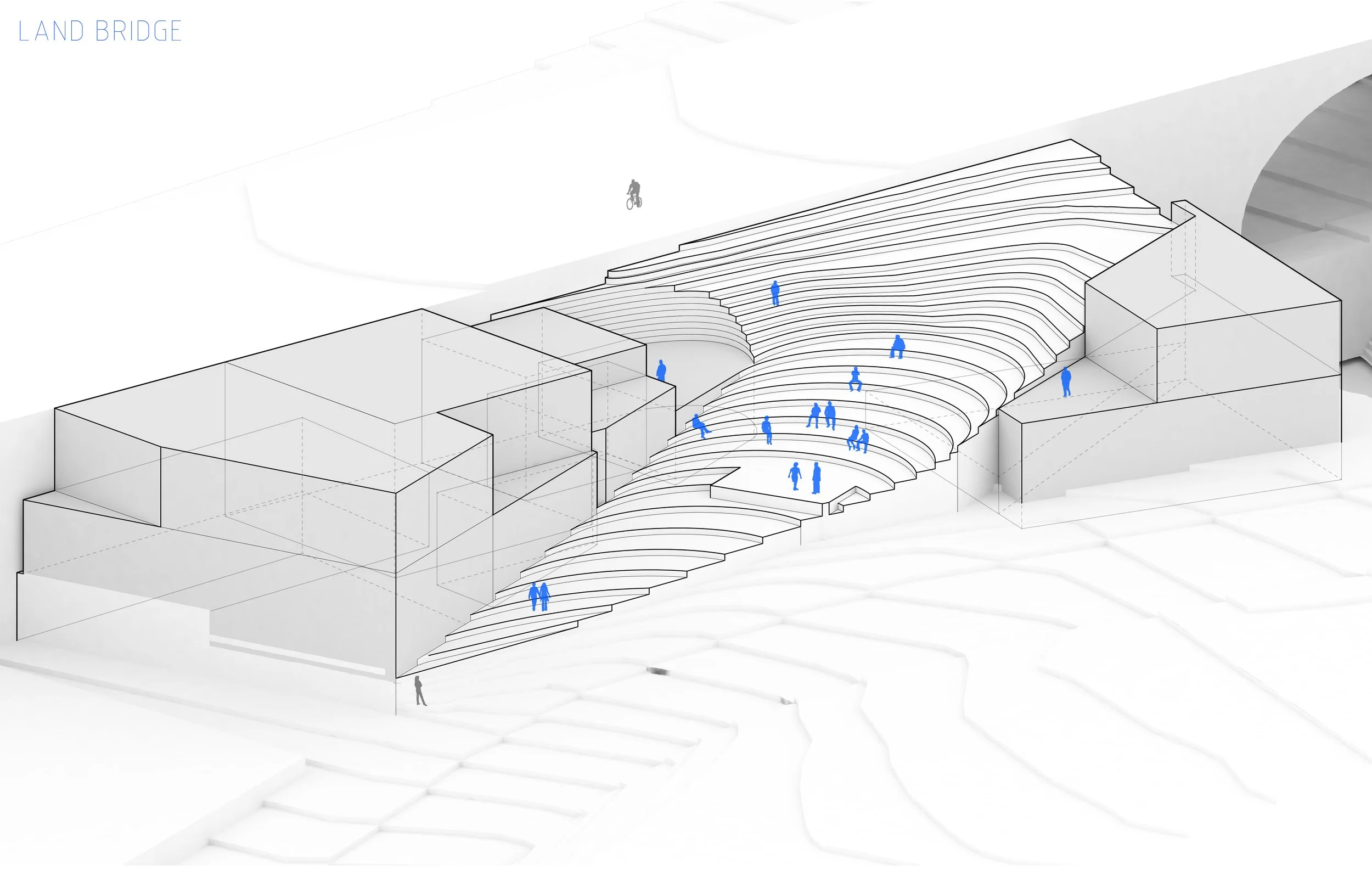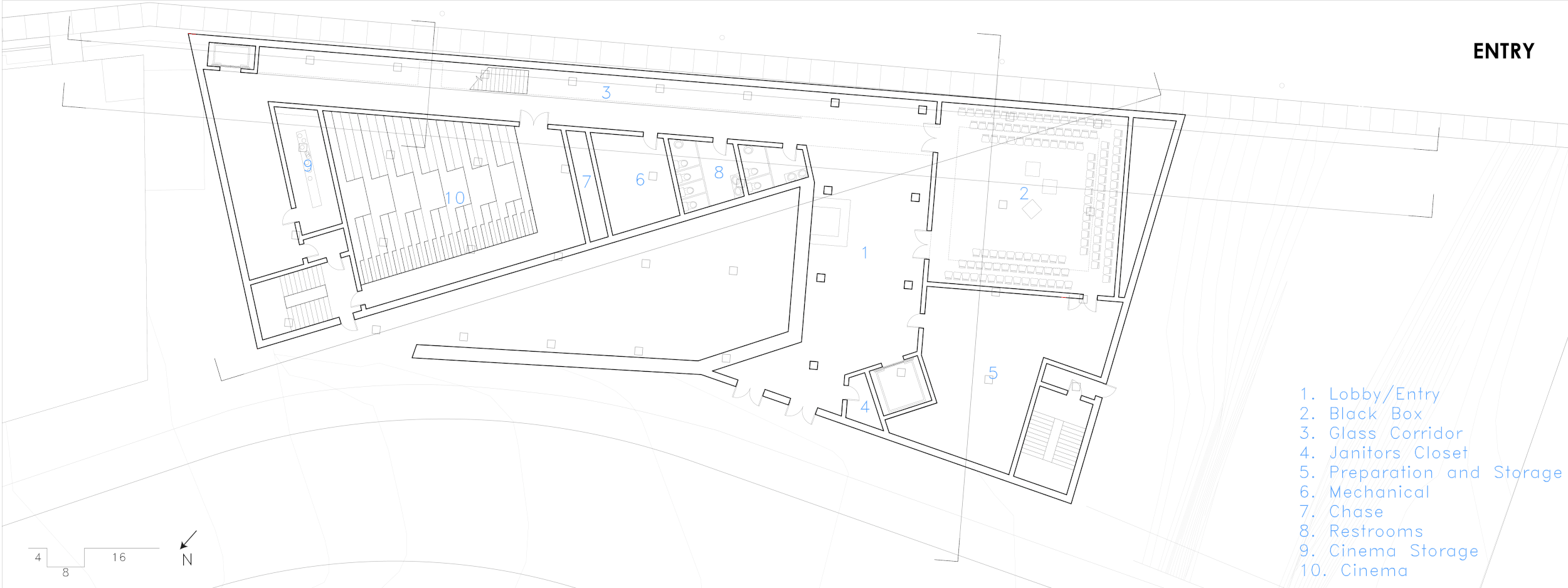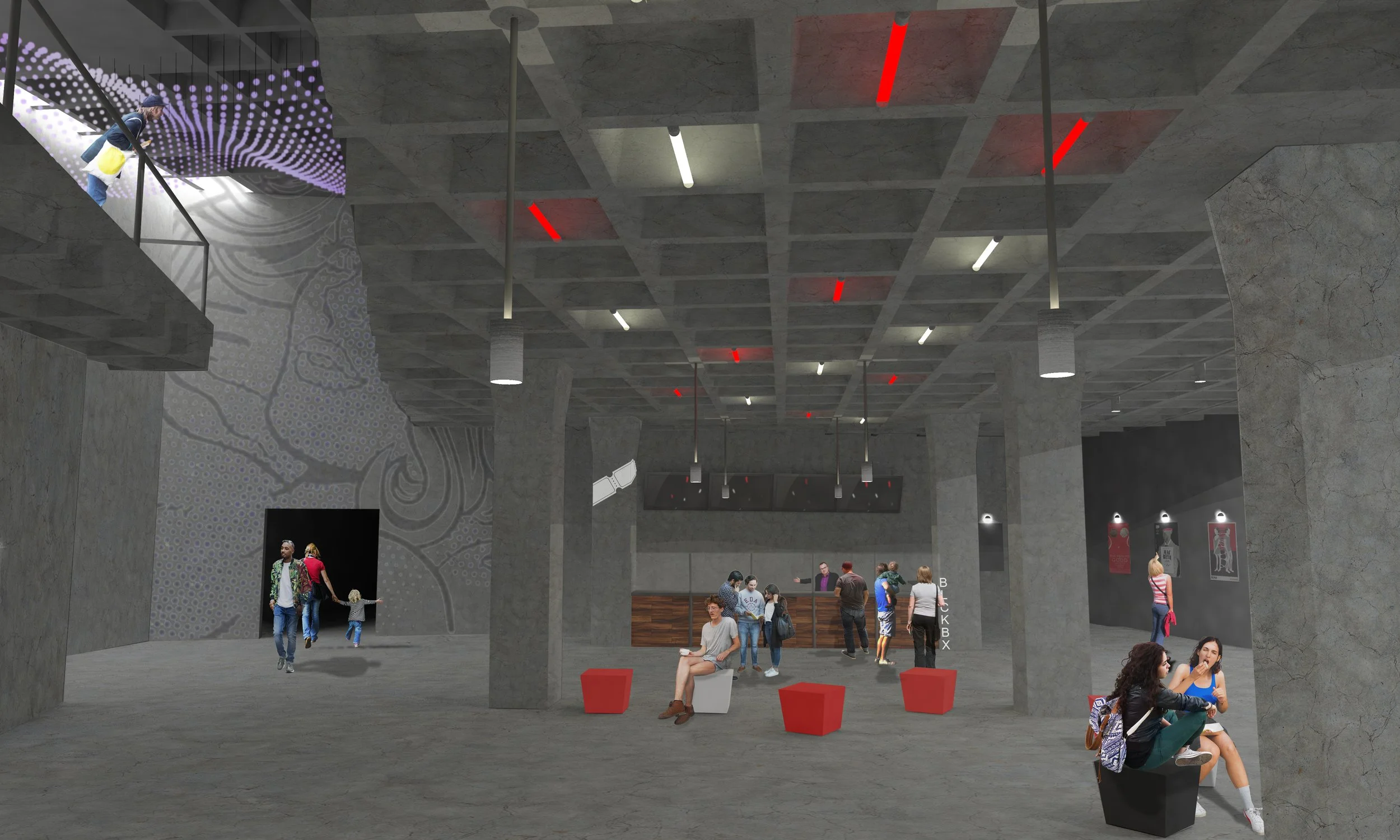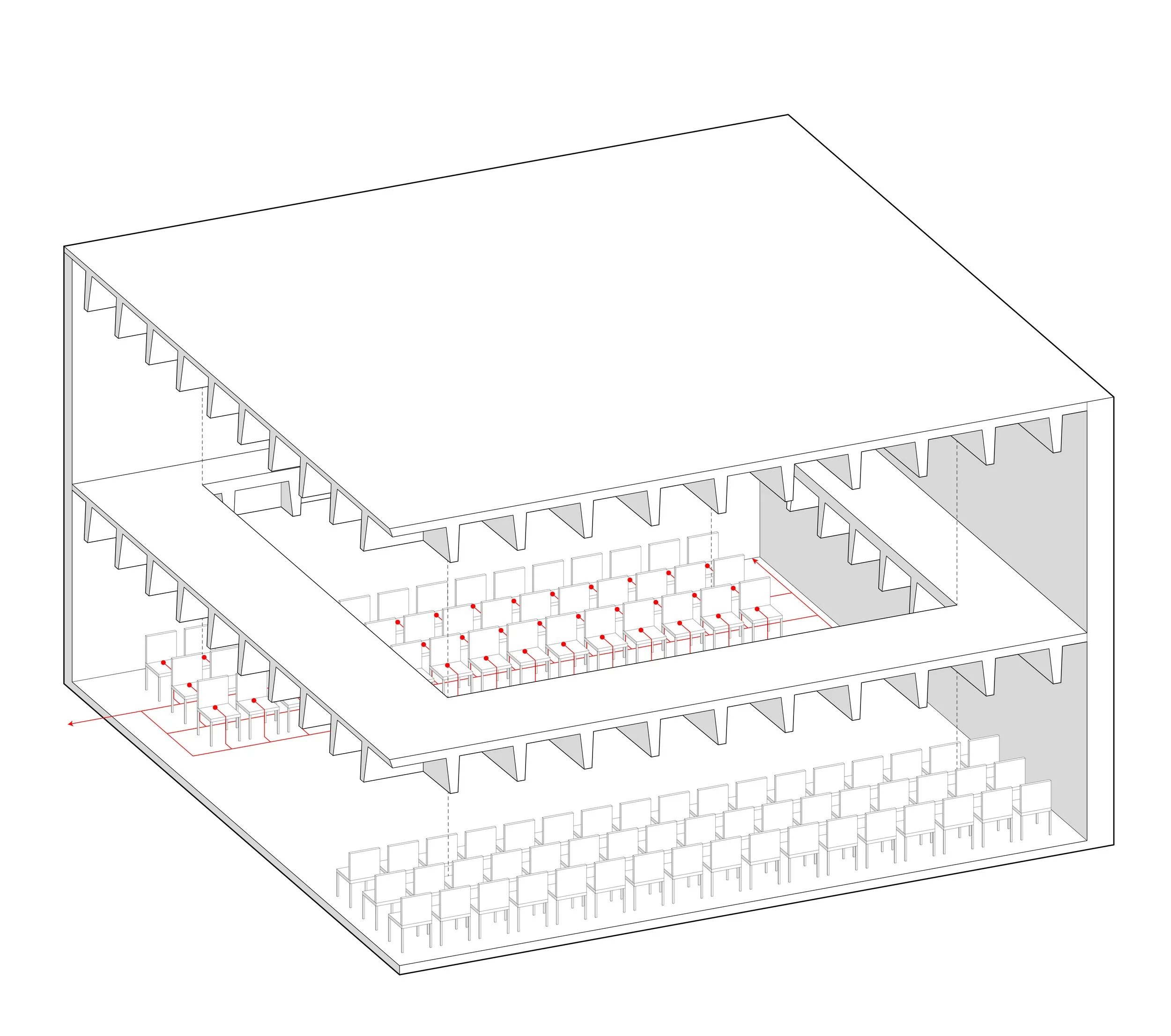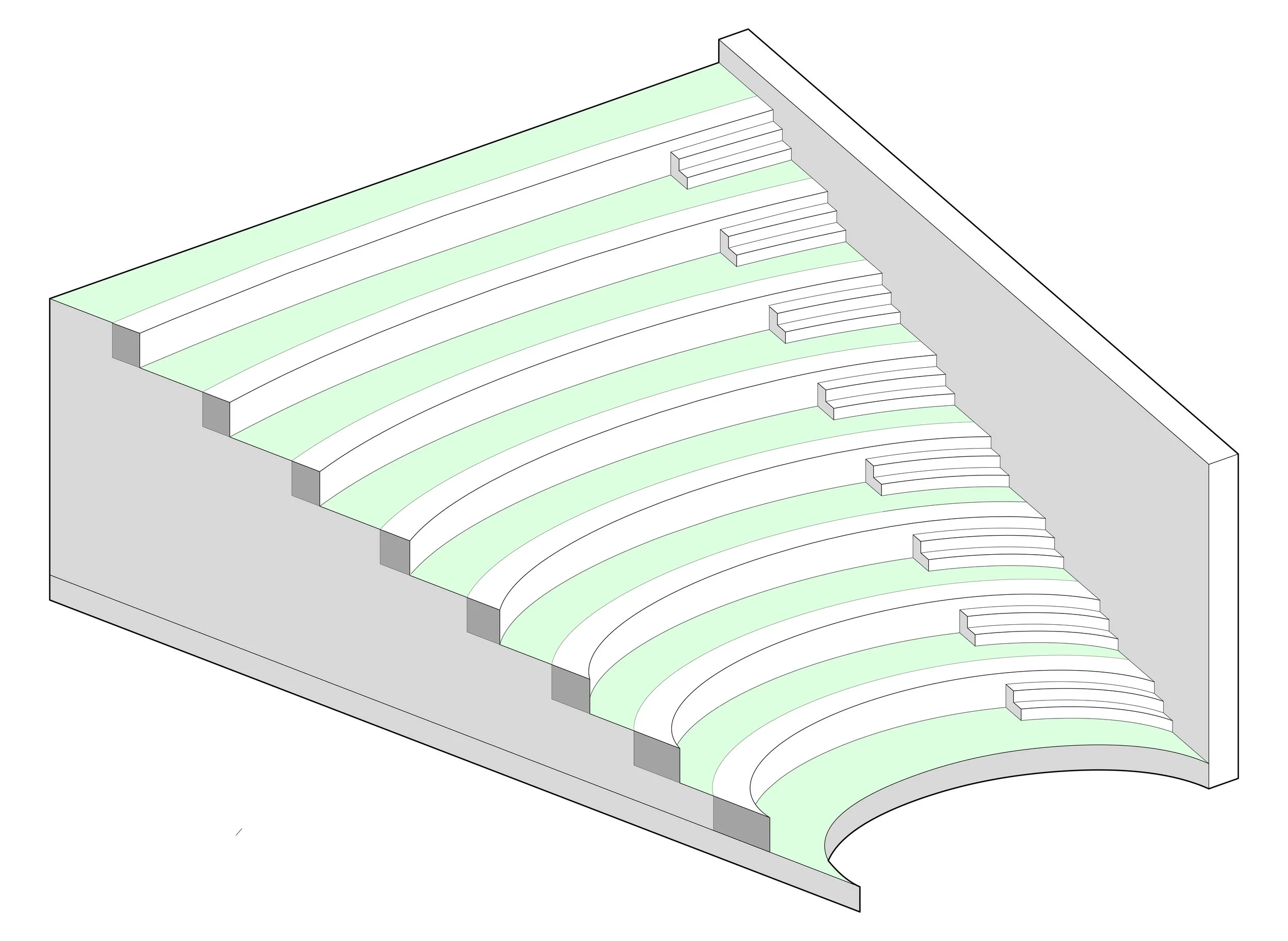landbridge
landbridge is a proposal for a tripartite theatre space on the detroit superior viaduct in cleveland, ohio.
rules of the landbridge
massive elements: sandstone
sub massive elements: concrete
lighter elements: glass
sandstone: sandstone mimics the massivity of the superior viaduct. this is meant as a harsh boundary and an element that cannot be crossed directly, only passed through with the help of an outside element to change the narrative on what that specific planar element is.
concrete: concrete is a subdivision of these sandstone elements. concrete is massive in itself, but possess an ability that sandstone doesn’t, which is to take various forms, as well as be broken down into infinite units because of its use of small granular material. because of this flexibility in form, the concrete possess the ability for thresholds. it allows a gateway around these permanent sandstone structures that one may find impossible to penetrate.
glass: glass is the lightest element of them all. glass is a threshold as well and can even further subdivide a space. glass is telling a viewer and an occupying individual that what lies beyond it isn’t a secret. glass is not for private spaces, it’s for spaces that all can see and enjoy. glass adds to this nest that lies within the monolith. an overarching stone mass encasing a concrete sub-divider, encasing a glass shell. glass’s transparency allows for the viewing of all the massivity, surrounding it. it’s an invisible threshold.
the rules go as follows:
1) sandstone is a profile to an overarching encasement
2) concrete is how one can pass through the encasement
3) glass is a window and threshold to embed deeper within
1) existing monolith 2) degradation 3) retention 4) occupation


